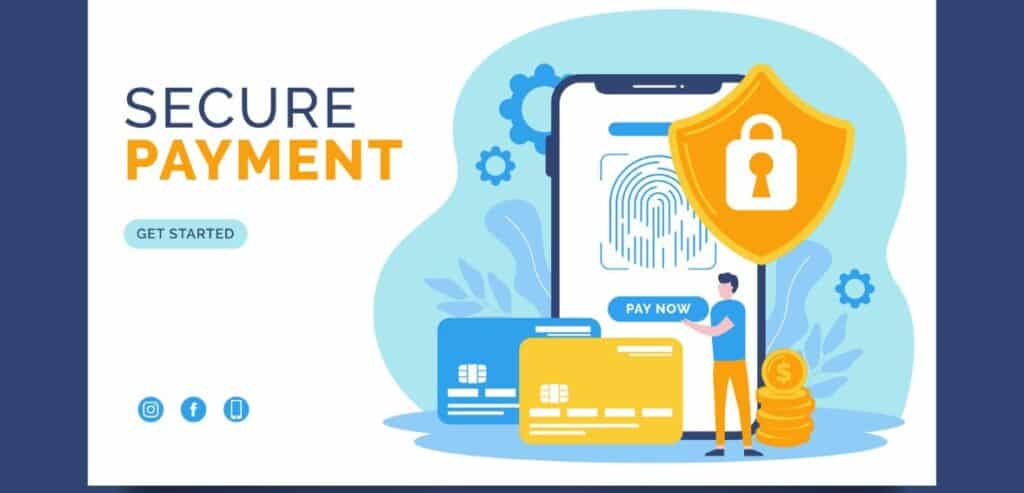
By Zackary Rhodes October 14, 2025
Donation fraud occurs when con artists take advantage of people’s generosity and misuse funds intended for nonprofit organizations. This could involve pretending to be legitimate charities, starting phony ones, or taking over legitimate campaigns in order to embezzle money. Fraudsters can now instantly and anonymously reach thousands of donors because of the rise of digital fundraising.
The outcome is disastrous: charities lose credibility, donor trust is damaged, and resources never get to the people who need them. Maintaining integrity in charitable giving requires an understanding of how donation fraud occurs as well as how to spot and stop it. Donors and organizations can make sure that generosity stays safe and serves a purpose by developing robust internal safeguards and learning to recognize warning signs.
The Rise of Digital Donation Scams

With the increasing accessibility of online fundraising, scammers have discovered new ways to trick people. The prevalence of phony crowdfunding campaigns, cloned social media profiles, and fake charity websites is rising. Because of the anonymity provided by the internet, criminals can pose as legitimate organizations, making it challenging for donors to distinguish between fake and genuine appeals.
These schemes frequently find cover in crises and disasters. Scammers take advantage of people’s quick, helpful reactions during emotional times. Because digital transactions happen so quickly, money can disappear before fraud is discovered. The first step in stopping online donation fraud and preserving donor confidence is acknowledging this changing environment.
Common Types of Donation Fraud
Donation fraud isn’t one-size-fits-all. Scammers employ diverse methods to exploit charitable intentions. The most common include fake charities, unauthorized fundraising, credit card scams, false invoicing, and insider embezzlement.
Some fraudsters create entirely fictitious charities, complete with fabricated stories and stolen images, to elicit sympathy. Others hijack legitimate campaigns, diverting donations to personal accounts. False invoicing—where fraudulent bills are sent to nonprofits—targets administrative staff directly. Credit card scams and stolen donor data are also common, particularly for charities that lack secure payment systems.
Understanding these fraud types enables organizations to build robust internal controls while helping donors identify suspicious activities before harm occurs.
Credit Card and Payment Scams
Credit card scams remain one of the most persistent threats in charitable transactions. Fraudsters may use stolen card details to make fake donations, test card validity, or launder money. When the rightful cardholder disputes the charge, charities face chargebacks—losing both funds and credibility.
Nonprofits must work with PCI-compliant payment processors to detect unusual patterns, verify transactions, and secure donor data through encryption. Donors, too, should only contribute through verified payment gateways. By ensuring both sides of the transaction are protected, charities can reduce exposure to this costly and damaging type of fraud.
Unauthorized Fundraising Campaigns
Unauthorized fundraising occurs when individuals or groups collect money under the name of a legitimate charity without permission. Fraudsters may set up crowdfunding pages or social media appeals using real organizations’ branding to deceive the public.
This type of fraud damages the charity’s reputation and diverts funds away from legitimate programs. To prevent it, organizations must actively monitor digital platforms, report imposters, and communicate clearly with supporters about official donation channels. Public awareness campaigns also help donors distinguish genuine appeals from impersonations.
False Invoicing and Internal Fraud
Not all donation fraud happens externally. Internal fraud—such as false invoicing or embezzlement—can be equally damaging. Dishonest employees or contractors may create fake supplier invoices or redirect funds to personal accounts.
Implementing strict financial controls, segregation of duties, and independent audits is critical. Regular reconciliations and transparent reporting ensure funds are used ethically. Leadership must cultivate a culture of accountability and ethics, where irregularities are reported without fear of retaliation. Preventing internal fraud starts with trust—but requires oversight to maintain it.
Red Flags for Donors and Charities
Recognizing early warning signs helps prevent losses. Fraudulent appeals often share telltale characteristics—unsolicited requests, exaggerated urgency, lack of transparency, and high-pressure tactics. While these signs don’t always indicate fraud, they should prompt caution and verification.
By paying attention to these behavioural cues, donors can protect their contributions and organizations can strengthen their review processes before accepting funds or promoting campaigns.
Unsolicited Appeals
Receiving unexpected requests for donations, whether through phone calls, emails, or social media, should raise suspicion. Reputable charities rarely solicit donations randomly or without prior contact.
Before responding, donors should verify the organization’s authenticity by visiting its official website or consulting government charity registries. Taking time to validate an appeal—rather than reacting immediately—helps prevent fraud and ensures that funds are directed where they truly belong.
Sense of Urgency and Emotional Pressure
Fraudsters often fabricate urgency to cloud judgment. They may claim that immediate donations are needed to save lives or meet deadlines. Real charities may act swiftly during crises, but they also provide verifiable information and transparency.
Donors should resist pressure to give on the spot. Verifying appeals, confirming registration numbers, and checking news sources before donating can expose fraudulent tactics. Emotion should never replace due diligence.
Avoiding Unverified Links
Phishing scams often use emails or messages with embedded links directing donors to fake donation pages. Clicking these links can lead to stolen personal information or diverted funds. Donors should avoid such links and instead type the organization’s official URL directly into their browser.
Confirming website security indicators, such as HTTPS encryption, provides an additional layer of safety. Verifying that a site is legitimate before entering sensitive information protects both donors and their financial resources. Caution and verification are vital habits in the digital age of charitable giving.
Using Secure Payment Methods

Safe payment practices are essential for preventing donation fraud. Credit cards, checks, and verified online platforms offer protections against unauthorized charges. Avoiding cash, gift cards, or wire transfers reduces the risk of funds being misappropriated. Secure methods allow for tracking, dispute resolution, and documentation of donations.
Donors should also monitor bank statements to detect unusual activity and report potential fraud promptly. Adopting secure payment practices ensures contributions reach intended causes safely and provides peace of mind that donations are protected.
Lack of Transparency and Vague Information
Fraudulent organizations often provide little or no detail about how donations are used. Their websites or messages may contain vague promises of “helping those in need” without explaining exactly how funds will be distributed, who is responsible for oversight, or what outcomes the donations are achieving. Real charities, by contrast, are open about their governance, programs, and measurable impact. They share details about leadership, financial reports, and project updates.
When donors encounter appeals that avoid these details, it’s often an early warning sign. A legitimate charity will always welcome questions and provide clear answers. Transparency is not a luxury—it’s a non-negotiable foundation of trust. When its missing, skepticism isn’t cynicism; it’s due diligence. Donors have every right to expect accountability before contributing.
High-Pressure or Guilt-Based Tactics
Scammers often use urgency and emotional manipulation to cloud judgment. They might claim that a disaster just occurred or that a donation must be made “immediately” to save lives. Others play on guilt, suggesting that hesitation or refusal to give is equivalent to neglecting those in need. These tactics are deliberate psychological tools designed to bypass rational thinking.
Authentic charities never rely on emotional coercion. They provide time for reflection, transparent financial data, and verifiable ways to help. Donors should always pause before acting on emotion—especially when requests feel forced or rushed. If an appeal uses language designed to induce guilt or panic, it’s best to take a step back, investigate, and verify legitimacy. Patience, not pressure, is the hallmark of genuine giving.
Best Practices to Prevent Donation Fraud
Once the common fraud types and warning signs are understood, prevention becomes the next critical step. Both donors and organizations share responsibility in building a safer environment for charitable transactions. The focus must shift from reactive defense to proactive awareness—embedding verification, documentation, and secure systems into every stage of giving.
These best practices don’t just protect against financial loss; they reinforce trust, transparency, and the credibility of the entire charitable sector. When donors know their money is safe and organizations can operate confidently, generosity flourishes.
The following areas highlight practical, meaningful ways to prevent donation fraud in today’s fast-paced digital fundraising landscape.
Verifying Contact Information and Online Presence

A legitimate charity is easy to reach and transparent about its identity. Reputable organizations list physical office locations, official email addresses, and active phone numbers. Fraudulent groups, on the other hand, often hide behind anonymous contact forms or generic email accounts.
Donors should double-check website URLs for accuracy, as scammers often create fake domains that closely resemble real ones. Charities must also routinely monitor for impersonation or cloned sites that misuse their brand. Maintaining a consistent, verified digital presence demonstrates professionalism and builds donor confidence.
When details are difficult to confirm, or responses are evasive, that should be an immediate red flag. Credibility is not just claimed—it’s proven through openness and accessibility.
Using Secure and Traceable Payment Methods

Payment security forms the backbone of fraud prevention. Donors should always use traceable and protected methods such as credit cards, verified payment gateways, or direct transfers to registered accounts. Methods like gift cards, cryptocurrency, or wire transfers are nearly impossible to trace once money is sent, making them ideal tools for scammers.
Charities must partner with PCI-compliant payment processors that encrypt donor data and flag unusual patterns. Secure payment systems reassure donors that their money is handled responsibly, fostering confidence in continued support.
Using secure donation platforms is a key preventive measure. When evaluating those, nonprofits should consider data protection and compliance to safeguard donor information and maintain trust.
Establishing Written Acknowledgments
Every donation, whether large or small, should come with written confirmation. This acknowledgment serves not just as a receipt but as a symbol of transparency and gratitude. It should include the donation amount, purpose, and date, along with details about how the funds will be used.
Written acknowledgments give donors confidence that their generosity is properly recorded and recognized. They also help charities maintain accurate accounting and simplify tax reporting.
Automating this process ensures no contribution goes unrecognized and provides a paper trail in case of future audits or disputes. A clear acknowledgment system strengthens trust on both sides of the donation process.
Organizational Controls and Staff Training
Strong internal governance is one of the most powerful defenses against donation fraud. Clear policies should define how funds are collected, verified, and processed. Organizations need regular audits and strict segregation of financial duties to reduce internal risks.
Equally important is education. Staff and volunteers must be trained to recognize suspicious patterns—such as sudden spikes in donations or unusual donor behavior. Empowering teams with knowledge transforms them into active safeguards, rather than passive participants.
A culture of integrity starts with leadership but grows through consistent awareness and communication across the organization.
Transaction Monitoring and Reporting
Continuous monitoring of donations helps detect unusual activity before it escalates into a full-scale fraud incident. Large, rapid, or repetitive donations from unverified sources often signal potential issues.
Organizations should employ digital tools that flag anomalies automatically. Creating confidential reporting systems encourages staff, volunteers, and even donors to voice concerns without fear.
Quick response to suspicious activity—through investigation and proper documentation—minimizes damage and maintains donor trust. Fraud thrives in silence; transparency and accountability are its greatest deterrents.
Legal and Regulatory Compliance

Charities must operate within a clear legal framework. Compliance with charity registration, tax reporting, anti-money laundering regulations, and data protection laws ensures legitimacy and public trust.
Regular audits and transparent disclosures demonstrate that the organization upholds ethical and financial accountability. Noncompliance not only exposes a charity to legal consequences but also erodes its credibility in the eyes of donors.
By adhering to these standards, organizations show they respect both the spirit and the law of charitable giving—protecting themselves and the donors who sustain them.
Protecting Donor Data and Privacy
Safeguarding donor information is not optional—it’s a moral and legal obligation. Personal data such as addresses, payment details, and donation histories must be protected through encryption, secure servers, and controlled access.
Charities should develop clear privacy policies and communicate them openly. Donors should always understand how their information is used and stored.
Protecting privacy builds confidence, fosters repeat giving, and reduces the risk of identity theft. In a digital era where data is as valuable as money, ethical data management is central to donor relationships.
Maintaining Transparency and Accountability
Transparency and accountability form the foundation of a trustworthy nonprofit. Regular updates about how donations are allocated, progress on ongoing projects, and measurable results reassure donors that their contributions make an impact.
Publishing annual reports, newsletters, and independent audit results reinforces openness. Transparency is more than a moral principle—it’s a competitive advantage in a crowded fundraising environment.
When organizations are open and communicative, donors stay engaged, funding remains stable, and fraud has fewer places to hide. Honest communication keeps giving both ethical and effective. To maintain accountability while scaling operations, many organizations adopt donor management systems that streamline records, track contributions, and ensure proper allocation of funds.
Conclusion
Donation fraud threatens the foundation of charitable giving, but it can be countered through vigilance, transparency, and collaboration. Donors must remain cautious—verifying organizations before donating—while charities must uphold rigorous standards of integrity and security.
Every measure, from secure payment gateways to staff training, strengthens the trust that keeps the nonprofit sector alive. Fraud prevention is not merely about protecting money; it’s about protecting faith—in causes, communities, and compassion.
When charities and donors work together with accountability and awareness, generosity thrives. The true victory against fraud lies in maintaining a culture where giving remains pure, transparent, and profoundly human.